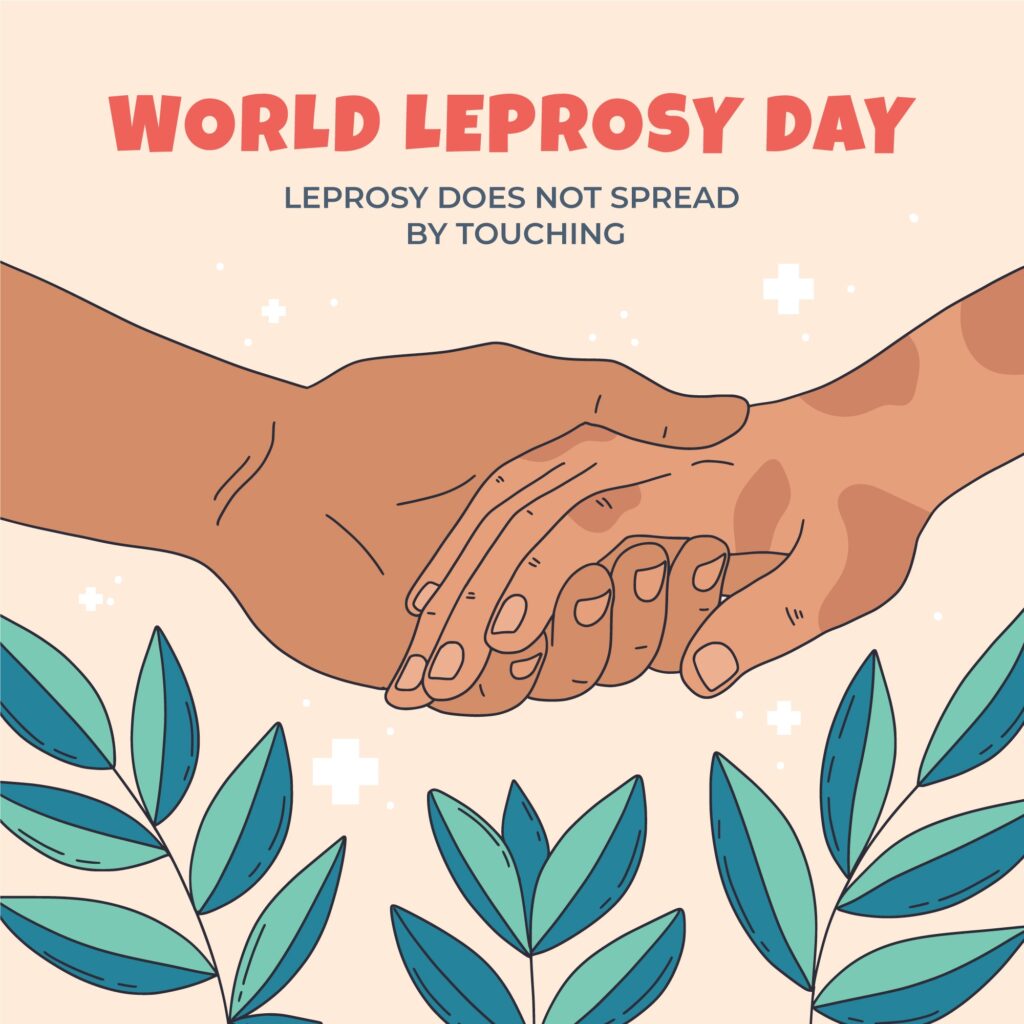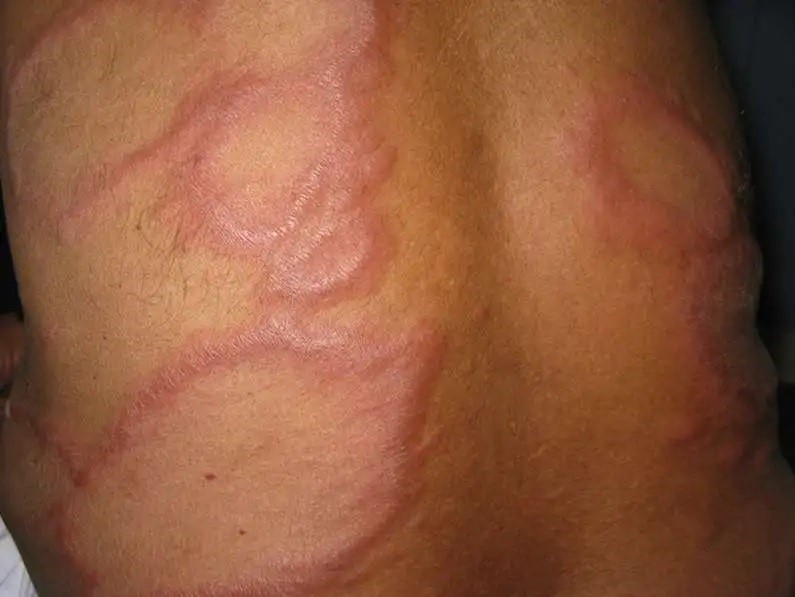Last updated on December 25th, 2024 at 04:51 pm
Leprosy treatment involves the use of a combination of antibiotics to combat the bacterial infection caused by Mycobacterium leprae. The primary drugs used in leprosy treatment are dapsone, rifampicin, and clofazimine, administered in a regimen known as Multidrug Therapy (MDT). Leprosy, also known as Hansen’s disease, is one of the oldest and most stigmatized diseases in human history.
Leprosy, an enduring infectious condition, is the consequence of an insidious invader known as Mycobacterium leprae, a cunning bacterium. It primarily affects the skin and nerves, leading to a wide range of symptoms, including skin lesions, numbness, and muscle weakness. If left untreated, leprosy can cause deformities and disabilities, which is why early diagnosis and treatment are crucial.
Leprosy Treatment
The primary therapy approach for leprosy is known as Multidrug Therapy (MDT), which is endorsed by the World Health Organization (WHO) as the most effective and widely used leprosy treatment regimen. Here’s an overview of leprosy treatment:
Multidrug Therapy (MDT):
MDT is the cornerstone of leprosy treatment. It involves the use of a combination of antibiotics to target and eliminate the M. leprae bacteria. The core components of leprosy treatment drugs are:
- Dapsone (DDS): Dapsone is an antibacterial medication that inhibits the growth of M. leprae. It is usually taken in the form of oral tablets, typically once a day.
- Rifampicin (RIF): Rifampicin is a potent antibiotic that kills M. leprae bacteria. It is administered once a month, often under direct observation by healthcare providers.
- Clofazimine (CFZ): Clofazimine has both antibacterial and anti-inflammatory properties, helping control the symptoms of leprosy. It is taken once a month, usually in combination with rifampicin.

Leprosy Treatment Duration:
The duration of MDT varies based on the type and severity of leprosy:
- Paucibacillary (PB) Leprosy: For PB leprosy, which has a lower bacterial load, the standard MDT regimen lasts for six months and includes dapsone and rifampicin, without clofazimine.
- Multibacillary (MB) Leprosy: MB leprosy, with a higher bacterial load, requires a longer treatment course. The standard MDT regimen for MB leprosy comprises 12 months of rifampicin, dapsone, and clofazimine.
Nerve Damage Management:
Leprosy can cause nerve damage, leading to loss of sensation and muscle weakness. Physiotherapy and rehabilitation programs help individuals regain function and prevent further disabilities.
Surgery:
In cases where leprosy has caused significant deformities, reconstructive surgery may be necessary. This can include procedures to correct clawed hands, foot drop, and facial deformities.
Psychosocial Support:
Leprosy not only affects the body but also the mental and emotional well-being of individuals. Psychosocial support is essential to help patients cope with the stigma and discrimination associated with the disease.
Preventive Measures:
Preventive measures, such as contact tracing and providing prophylactic remedies to close contacts of leprosy patients, are essential to halt the spread of the disease.
Challenges and Stigma in Leprosy Treatment
Despite significant progress in leprosy treatment, challenges remain. Stigma and discrimination against leprosy-affected individuals persist in many parts of the world. Addressing these social issues is just as crucial as providing medical treatment to combat the disease effectively.
> Consult a doctor and Order Medicine Online
Leprosy Treatment In Ayurveda
Ayurveda, the traditional Indian system of medicine, it revolves around a holistic approach that aims to balance the body’s doshas (vata, pitta, and kapha). We employ herbal remedies, dietary modifications, and detoxification therapies to enhance immunity and eliminate toxins.
Herbs like Neem, Manjistha, and Bakuchi are commonly used. Ayurvedic therapies like Panchakarma, which includes detoxifying treatments, play a crucial role in managing the condition. While Ayurveda can provide symptomatic relief and improve overall health, it is often used as a complementary therapy alongside modern medical treatment for leprosy to achieve comprehensive care.

Conclusion:
Leprosy treatment has come a long way from the days of isolation and fear. Modern approaches, such as multidrug therapy, early diagnosis, and comprehensive care, have transformed the outlook for individuals affected by leprosy.
While challenges and stigma persist, ongoing efforts to raise awareness, provide support, and improve access to treatment are essential to eradicate this ancient disease once and for all. With continued research, education, and compassion, we can move closer to a world free from the burden of leprosy.
Read: What are Generic Medicines?
Information about Generic Medicines
Generic medicines are identical copies of brand-name drugs, containing the same active ingredients, dosage, safety, and efficacy. They offer a cost-effective alternative as they don’t involve the research and marketing expenses of brand-name drugs.
Regulated by health authorities, generics must meet rigorous quality standards to ensure their safety and effectiveness. They have become an essential component of healthcare systems worldwide, making essential medications more affordable and accessible to patients while maintaining the same therapeutic benefits as their brand-name counterparts.
FAQs on Leprosy Treatment
Q1. What is leprosy treatment?
Leprosy treatment involves a combination of antibiotics, primarily dapsone, rifampicin, and clofazimine, to cure the Mycobacterium leprae bacteria. The therapy duration varies based on the type and severity of leprosy, typically lasting six months for paucibacillary (PB) leprosy and 12 months for multibacillary (MB) leprosy. Regular monitoring, rehabilitation, and psychosocial support are essential components of leprosy remedy to prevent disability and address the associated stigma.
Q2. What is the best leprosy treatment?
The best leprosy medicine is Multidrug Therapy (MDT), a combination of antibiotics including dapsone, rifampicin, and clofazimine, recommended by the World Health Organization (WHO). MDT has proven highly effective in curing leprosy, preventing transmission, and minimizing complications when administered according to the prescribed regimen.
Q3. Can leprosy be completely cured with treatment?
Yes, early diagnosis and treatment with MDT can completely cure leprosy, preventing further progression of the disease and related complications.
Related Links:
